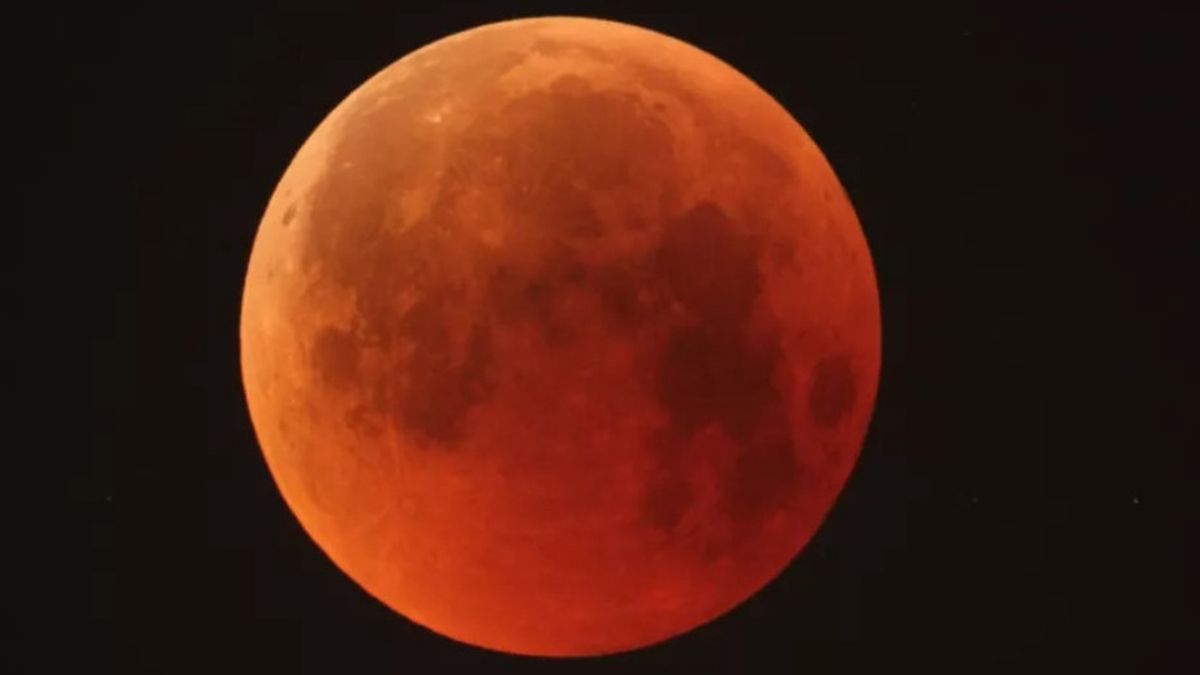JAKARTA - This year the sky will also be decorated by the first lunar eclipse dubbed the Blood Moon, which will occur on May 15 and 16, unfortunately, this phenomenon will not be seen worldwide.
A blood moon occurs when the Moon on Earth is in a total lunar eclipse passing through the umbra or the Earth's inner shadow. Although it has no special astronomical significance, the scene in the sky is striking as the normally white Moon becomes red or reddish-brown.
Light from Earth is refracted around the edge of the atmosphere and falls to the surface of the moon. That's where the red hue comes from. Simply put, imagine at sunset and sunrise on Earth that will reflect on the surface of the moon, because the sky looks redder during this phase of the day, that's another way to explain why the dark color of the Blood Moon occurs.
Lunar eclipses can only occur during a full moon, when the sun shines on the surface in full. Usually, the full moon does not experience an eclipse because the Moon orbits in a slightly different plane from the Earth and the Sun. The Earth passes between the Moon and the Sun and cuts off the sunlight, causing an eclipse.
If the Earth partially blocks the Sun, and the darkest part of its shadow falls on the surface of the moon, it is called a partial eclipse. The black shadow will look like biting the Moon.
Occasionally, the Moon passes through the brighter part of Earth's shadow, causing a penumbral eclipse. However, during a full eclipse, something spectacular happened.
The moon is completely in the shadow of the Earth. At the same time, a small amount of light from Earth's sunrise and sunset (on the planet's disk) falls on the lunar surface. Because the light waves are stretched, they look red. When this red light hits the surface of the moon, it also appears red.
Meanwhile, the Blood Moon will surface on May 16 at 12:11 a.m. EDT (0411 GMT). All phases of the eclipse end at 01:55 a.m. EDT (0555 GMT).
It will also be visible in parts of the Americas, Antarctica, Europe, Africa, the eastern Pacific, New Zealand, Eastern Europe and the Middle East. To watch it, you can visit NASA's official YouTube page, here.
The Process of the Occurrence of a Lunar Eclipse
Citing Space, Monday, May 9, but how can a lunar eclipse occur when the moon enters the Earth's shadow? Because the Earth and Moon have orbits that are slightly tilted to each other, this usually occurs several times a year when the orbits tilt parallel. Depends on how it happened.
VOIR éGALEMENT:
A penumbral eclipse occurs when the Moon enters Earth's lighter shadow. This sense of eclipse is sometimes difficult to see, as the Moon will only grow a little darker. It won't turn red either.
It is known, a partial eclipse occurs when the Moon enters partially into the umbra, or shadow that is deeper than Earth. Neither will the moon turn red, but we will see the dark side of the visible surface representing Earth's shadow.
For information, the phenomenon of a lunar eclipse in the near future will be the first of two lunar eclipses in 2022. The next one will occur on November 8, 2022.
The phenomenon will be seen in at least parts of Asia, Australia, North America, parts of northern and eastern Europe, the Arctic and much of South America.
The English, Chinese, Japanese, Arabic, and French versions are automatically generated by the AI. So there may still be inaccuracies in translating, please always see Indonesian as our main language. (system supported by DigitalSiber.id)















